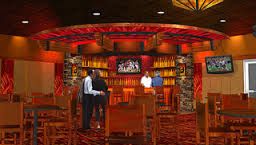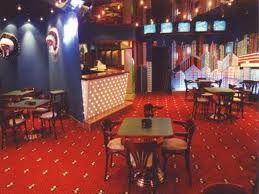Environment
The Money Maze
Another look at the psychology of casino environments
Posted July 18, 2013

In a previous blog I briefly examined how gaming venue design affects gambling behavior, particularly in relation to casino atmospherics. Over the last century, the gaming industry has used various inducements and ploys to entice people to gamble. The psychology of marketing has become big business. Casinos – like any other business with a product to sell – have had to keep up with times and spend huge amounts of money in an effort to get even more of your money. As a psychologist, I have always been very interested in the design features of gambling venues. Put more simply, to what extent is psychology used in design features as a way of taking more money from you?
I have spent many years studying the situational characteristics of many gambling venues to examine this question. Situational characteristics are primarily features of the environment (such as the location of the casino, the number of casinos in a specified area, membership requirements, etc.) but can also include internal features of the casino itself (such as décor, heating, lighting). These features can be very important in both the initial decision to gamble and continued gambling once you are in the casino.
Most casinos around the world try to fill up as much floor space as they can with slot machines. This is because slots are the most profitable form of gambling for operators. The profitability of slot machines can depend on simple factors such as floor location, coin denomination and pay off schedules. Floor layout is also important in other areas. For instance, restaurants are often positioned in the centre or back of the casino so that customers have to pass the gaming areas before and after they have eaten. Another strategy is to use deliberate circuitous paths to keep customers in the casino longer, the psychology being that if the patrons are in the casino longer they will spend more money. In many US casinos the management will provide free alcoholic drinks – all in the hope that you may spend a little more while under the influence and being a little less rational!

Casino designers can also introduce environmental features to manipulate human senses. For instance, light and colour are two variables that can affect behaviour – and gambling is no exception. Psychological research has shown that colour can evoke affective states and influence behaviour. Some colours are associated with certain moods. Red is “exciting” and “stimulating”, blue is “comfortable”, “secure” and “soothing”, orange is “disturbing” and green is “leisurely”. Colour can affect physiological reactions such as blood pressure, breathing rate, mood and arousal. In gambling situations, research (including some of my own) has shown that people will gamble and stake money more under red light than colours towards the blue end of the spectrum.
The use of sound can also be important. Constant noise and sound gives the impression of a noisy, fun and exciting environment. In addition, many slot machines play musical tunes or ring bells and buzzers if someone has won. As coins are paid out by dropping down onto a metal pay out tray (along with buzzers, bells and music), it gives the impression that winning is more common than losing - as you cannot hear the sound of losing! Music can also be used to manipulate how we feel. Two of the many effects music can have may be to heighten psychological arousal or to relax. Early studies showed that when customers in a supermarket were exposed to loud music, their shopping rate – how much they bought per minute spent in the store – was higher than when quiet music was played. Gamblers may also spend more under similar conditions although there have only been a handful of studies published to date. We have carried out a couple of experiments which have shown that gamblers play faster when there is music with a high beats per minute playing in the background.
Smell may also have an influence on gambling behaviour. Experiments carried out in Las Vegas casinos showed that a slot machine’s takings could be increased by spraying them with pleasant odors. Researchers found that the slot machines with pleasant aromas had significantly higher profits than the machines not sprayed with any odours. This is very similar to shops that pump the smell of chocolate in the run up to Valentine’s Day hoping it will increase sales.

Physical comfort is also an important factor. I call this the “seating, eating and heating” phenomenon. If a gambler is physically (as well as psychologically) comfortable, there is more chance they will stay in the casino. Comfort is therefore used by casino management to encourage and prolong gambling. For instance, taking a gambler off their feet enhances physical comfort considerably and reduces fatigue. Another obvious customer care tactic is the availability of refreshments and amenities (including toilets). Paradoxically, serious gamblers often gamble for long periods of time. Consequently, they are often reluctant to leave a slot machine or the roulette table to get a drink or food, or go to the rest room as they do not want to lose their “lucky seat” or favourite machine. Interestingly, in one research study, thirty bars with slot machines were compared with another thirty that didn’t. In the bars without slot machines, almost all of the clientele drank pints. However, in the bars with slot machines, only 8% of the clientele drank pints. The main reason for this was that slot machine players did not want to leave the machines to go to the toilet in case someone ‘stole’ their machine!


